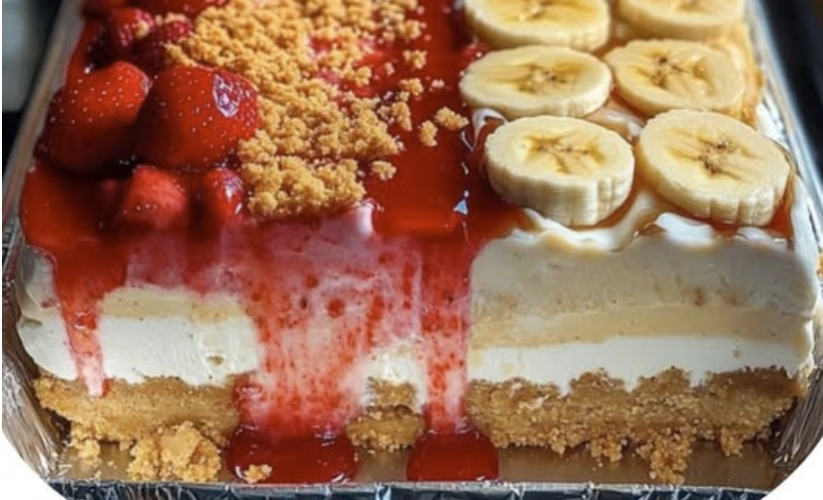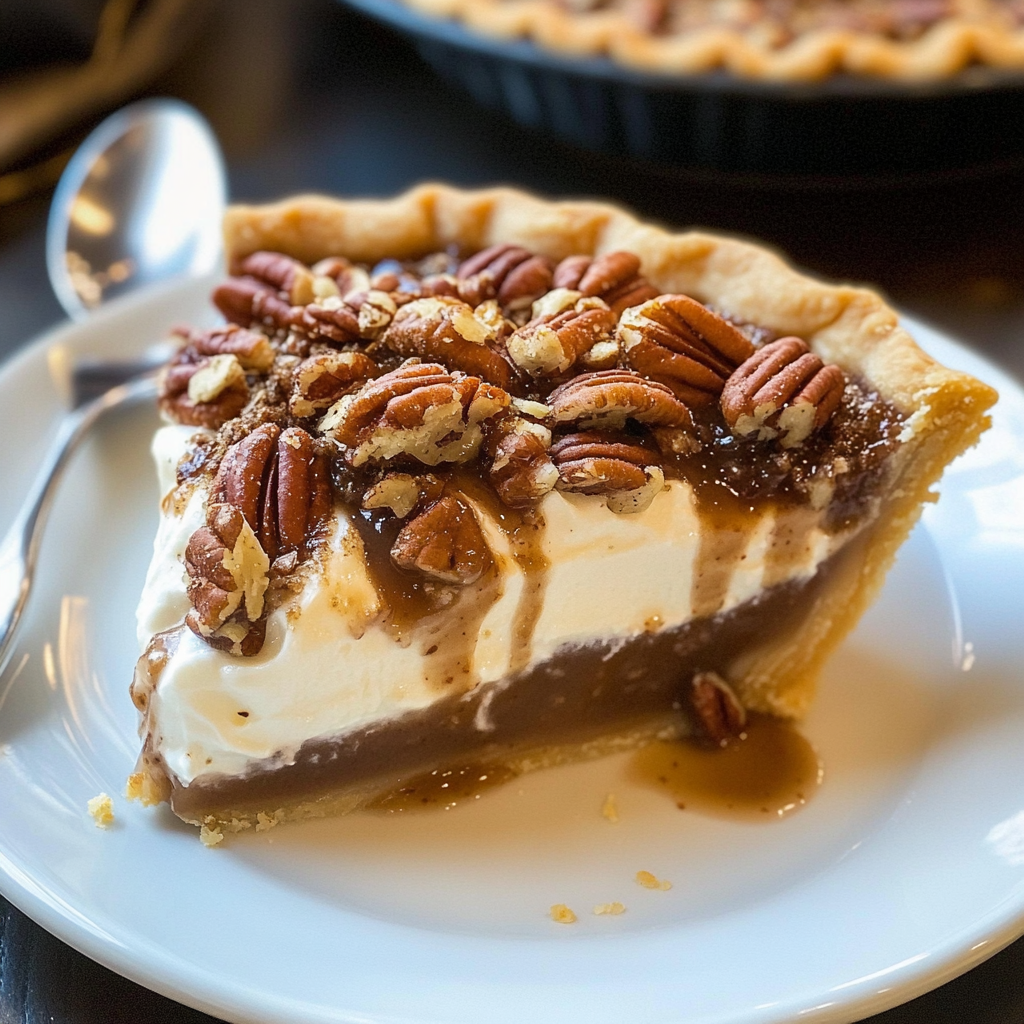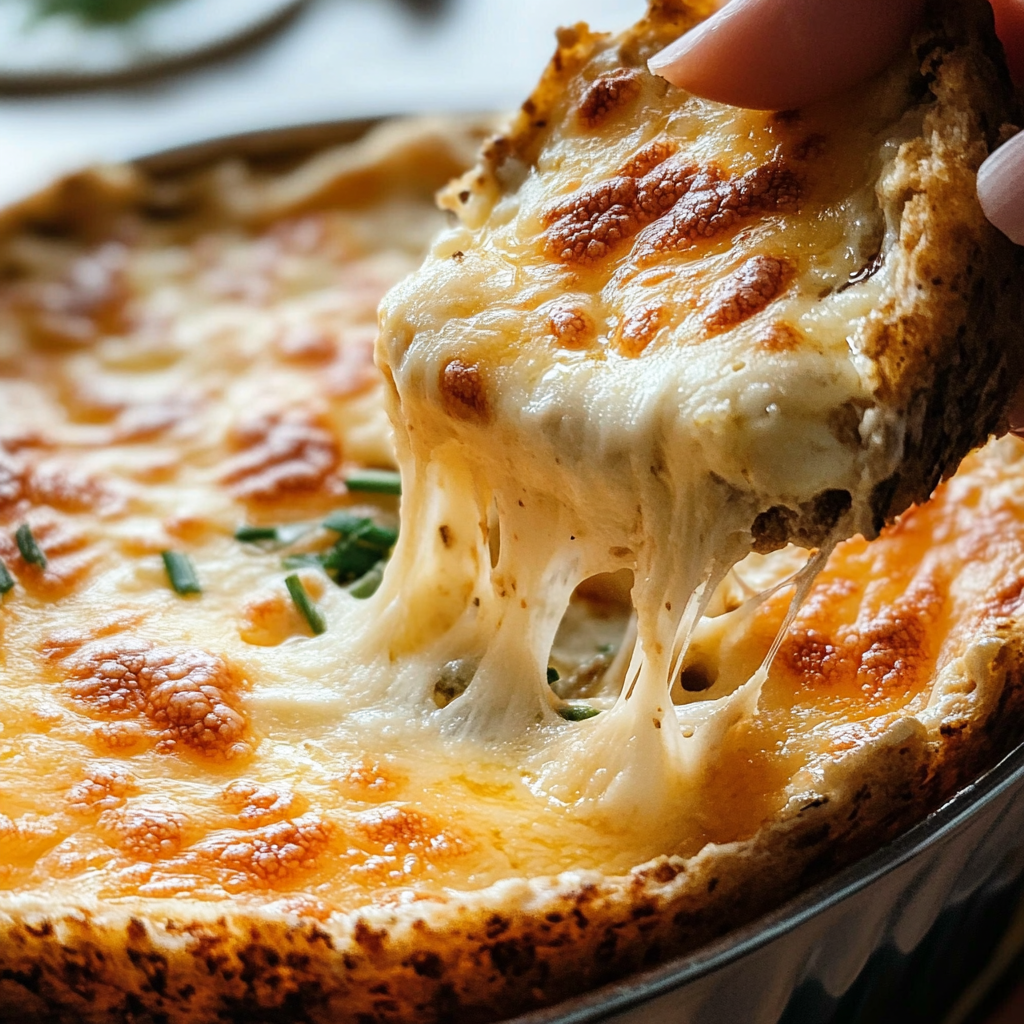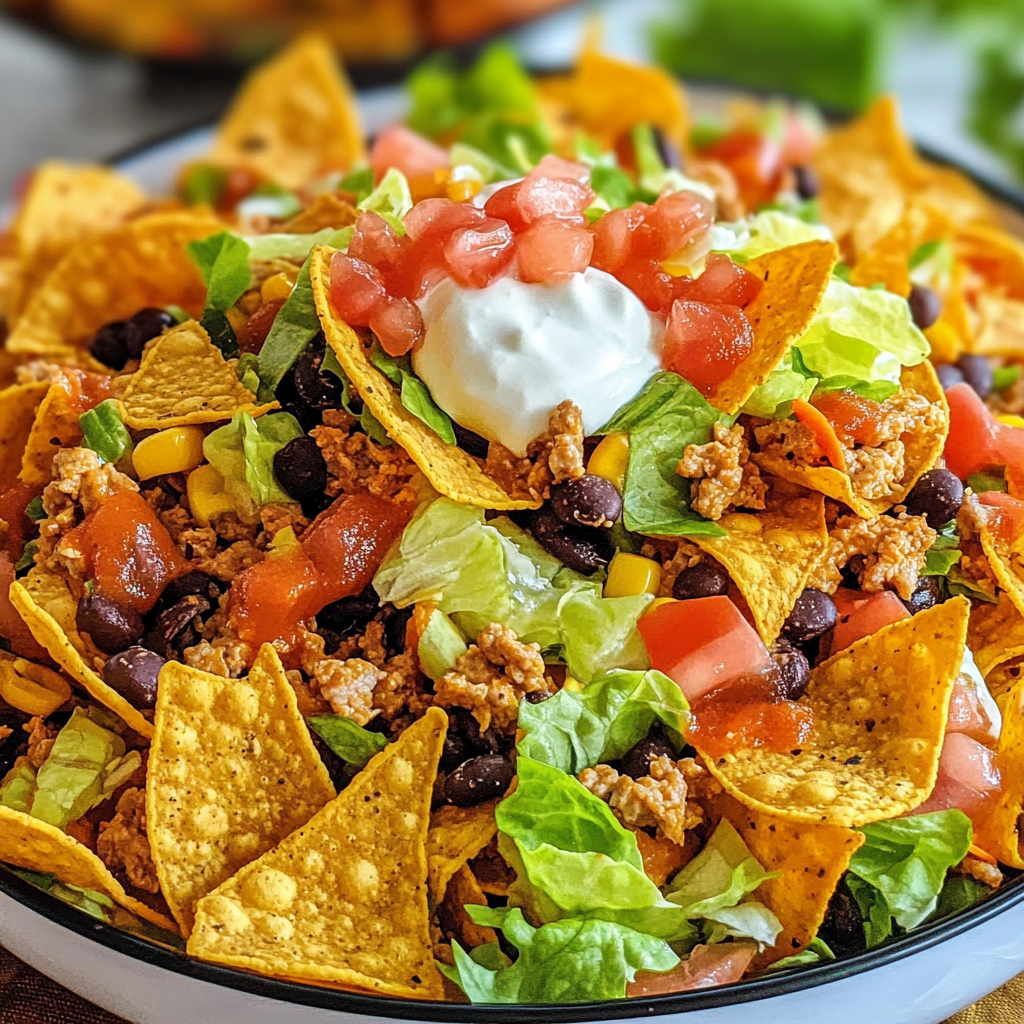
Crispy Nacho Egg Rolls: The Ultimate Game Day Fusion
These crispy nacho egg rolls represent the perfect marriage of two beloved comfort foods—combining the bold, zesty flavors of loaded nachos with the satisfying crunch of golden-fried egg rolls. Each bite delivers layers of seasoned ground beef, melted cheddar cheese, and fresh vegetables, all wrapped in a perfectly crispy shell that shatters to reveal the warm, gooey interior. What makes these truly special is how they transform familiar nacho flavors into a portable, shareable format that’s ideal for parties, game day gatherings, or any time you want to surprise people with something unexpectedly delicious.
Ingredients
For the Nacho Filling:
- 1 lb ground beef (85/15 fat ratio preferred)
- 1 packet (1 oz) taco seasoning
- ½ cup water
- 1 cup sharp cheddar cheese, shredded
- ½ cup red bell pepper, finely diced
- ½ cup green onions, chopped
- ⅓ cup sour cream
- 2 tablespoons fresh cilantro, chopped
- 1 jalapeño, seeded and minced (optional)
For Assembly:
- 12 egg roll wrappers
- 2 tablespoons water (for sealing)
- Vegetable oil for frying (about 4-6 cups)
For Serving:
- Fresh cilantro, chopped
- Salsa or pico de gallo
- Guacamole
- Extra sour cream
- Queso blanco for drizzling
- Lime wedges
Instructions
Step 1: Create the Perfect Filling Base
Heat a large skillet over medium-high heat and add the ground beef, breaking it up with a wooden spoon as it cooks. Cook for 6-8 minutes until completely browned and no pink remains, stirring frequently to ensure even cooking.
Drain excess fat from the pan, leaving just enough to keep the meat moist—about 1-2 tablespoons. This prevents the filling from becoming greasy while maintaining flavor and moisture.
Add the taco seasoning and water to the cooked beef, stirring to combine completely. Reduce heat to medium-low and simmer for 5-7 minutes, stirring occasionally, until the liquid has mostly evaporated and the mixture is thick and fragrant.
Step 2: Build the Flavor Profile
Remove the seasoned beef from heat and transfer to a large mixing bowl. Allow it to cool for 5 minutes—this prevents the cheese from melting prematurely and becoming stringy.
Add the shredded cheddar cheese, diced red bell pepper, chopped green onions, fresh cilantro, and minced jalapeño if using. Mix thoroughly to distribute all ingredients evenly throughout the beef mixture.
The filling should hold together well when pressed but not be overly wet. If it seems too dry, add an extra tablespoon of sour cream; if too wet, let it cool completely to allow any excess moisture to absorb.
Step 3: Master the Assembly Technique
Lay one egg roll wrapper on a clean, dry surface in a diamond orientation with one corner pointing toward you. Keep remaining wrappers covered with a damp towel to prevent drying out.
Place about 2-3 tablespoons of filling in the center of the wrapper, leaving about 2 inches of space on all sides. Top the filling with a small dollop (about ½ teaspoon) of sour cream.
Fold the bottom corner over the filling, tucking it slightly under the mixture. Fold in the left and right corners, then roll tightly toward the top corner, keeping the roll as tight as possible without tearing the wrapper.
Step 4: Seal for Success
Brush the top corner of the wrapper with water using your finger or a pastry brush. Press firmly to seal the edge—proper sealing is crucial for preventing the filling from leaking during frying.
Place completed egg rolls seam-side down on a baking sheet lined with parchment paper. Cover with a damp kitchen towel if not frying immediately to prevent the wrappers from drying out and cracking.
Step 5: Achieve Frying Perfection
Heat vegetable oil in a large, heavy-bottomed pot or deep fryer to 350°F (175°C). Use enough oil so the egg rolls can float freely—typically 4-6 cups depending on your pot size.
Test the oil temperature with a small piece of wrapper—it should sizzle immediately and turn golden within 30 seconds. Maintaining proper temperature is crucial for achieving crispy exteriors without greasy interiors.
Carefully add 2-3 egg rolls to the hot oil, being careful not to overcrowd the pot. Fry for 2-3 minutes, turning once halfway through, until golden brown and crispy on all sides.
Step 6: Perfect the Drainage
Using a slotted spoon or spider strainer, carefully remove the fried egg rolls from the oil and transfer to a plate lined with paper towels. This immediately absorbs excess oil while preserving the crispy texture.
Let them rest for 2-3 minutes before serving—this allows the filling to settle and prevents burning your mouth on molten cheese while maintaining the ideal serving temperature.
Repeat the frying process with remaining egg rolls, allowing the oil to return to 350°F between batches for consistent results.
Step 7: Garnish and Present
Arrange the hot egg rolls on a serving platter and immediately garnish with freshly chopped cilantro for color and fresh flavor contrast.
Serve with small bowls of salsa, guacamole, sour cream, and any other desired dipping sauces. The variety of accompaniments allows each person to customize their experience.
Prep Time: 25 minutes | Cook Time: 20 minutes | Total Time: 45 minutes | Servings: 12 egg rolls | Calories: 200 per egg roll
The Science of Perfect Egg Roll Frying
Achieving the ideal crispy-outside, tender-inside texture requires understanding the science of deep frying. The high heat creates an immediate seal on the wrapper’s surface, preventing oil absorption while creating the signature golden crunch.
Oil temperature is critical—too low and the egg rolls absorb excess oil, becoming greasy; too high and the outside burns before the interior heats through. The 350°F sweet spot ensures rapid surface browning while allowing gentle heat penetration.
The egg roll wrapper’s wheat-based composition creates a particularly satisfying crunch when fried properly, with the thin layers crisping to create textural contrast against the soft, flavorful filling inside.
Understanding Taco Seasoning and Flavor Building
Commercial taco seasoning blends typically contain cumin, chili powder, paprika, onion powder, garlic powder, and oregano—spices that work synergistically to create that familiar Tex-Mex flavor profile we associate with nachos.
The addition of water and simmering time allows these spices to bloom and penetrate the meat while creating a slightly thickened mixture that holds together well in the egg roll format.
For those who prefer homemade seasoning, combine 1 tablespoon chili powder, 1 teaspoon each of cumin and paprika, ½ teaspoon each of onion powder and garlic powder, ¼ teaspoon oregano, and salt to taste.
Cheese Selection and Melting Properties
Sharp cheddar provides the bold flavor that stands up to the seasoned beef and spices while offering excellent melting characteristics that create those satisfying cheese pulls when you bite into the egg rolls.
The key is using freshly shredded cheese rather than pre-shredded varieties, which contain anti-caking agents that can prevent smooth melting and create a grainy texture in the finished product.
Adding the cheese to slightly cooled beef prevents it from melting completely during assembly, ensuring it maintains structure while still creating that molten interior when fried.
Advanced Assembly Techniques
Proper wrapper handling is crucial for professional results. Egg roll wrappers should be at room temperature for easy handling—cold wrappers crack, while overly warm ones become sticky and difficult to work with.
The amount of filling is critical—too little and the egg rolls seem empty; too much and they’re difficult to seal and may burst during frying. The 2-3 tablespoon measurement provides the ideal filling-to-wrapper ratio.
Rolling technique affects both appearance and structural integrity. Roll firmly but not so tight that you risk tearing the wrapper, and ensure the seam is on the bottom during frying for the most attractive presentation.
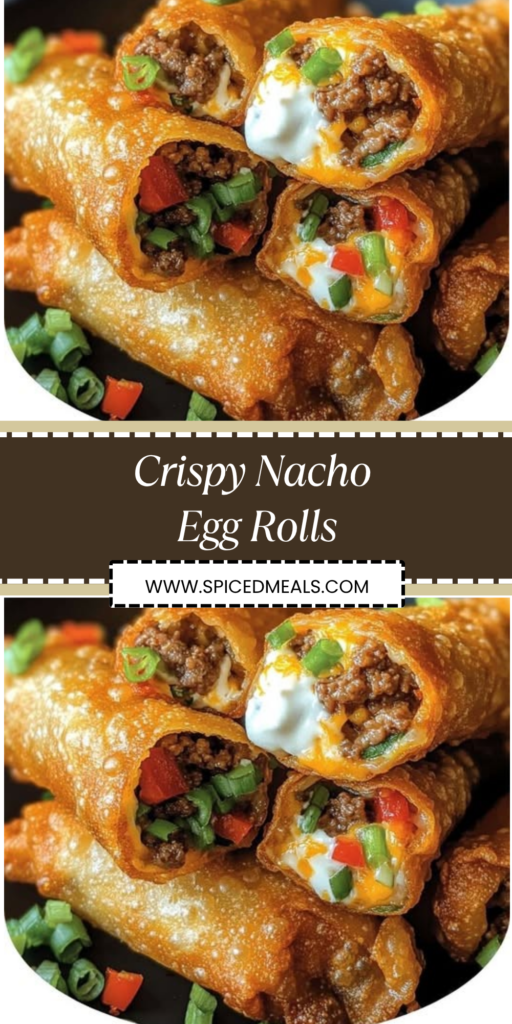
Creative Filling Variations
While the classic beef and cheese combination is perfection, this technique adapts beautifully to other flavor profiles. Chicken and pepper jack create a milder but still flavorful version, while ground turkey with southwestern seasoning offers a leaner alternative.
Vegetarian versions work excellently with seasoned black beans, corn, and cheese, providing protein and fiber while maintaining the satisfying texture and bold flavors that make these egg rolls special.
For breakfast variations, scrambled eggs with chorizo or sausage create morning-appropriate versions that work beautifully for brunch gatherings or weekend family meals.
Troubleshooting Common Issues
Egg Rolls Burst During Frying: Usually caused by overfilling, inadequate sealing, or oil temperature that’s too high. Ensure proper sealing and maintain steady 350°F temperature.
Soggy Wrappers: Typically results from oil temperature that’s too low or overcrowding the fryer. Maintain proper temperature and fry in small batches for best results.
Uneven Browning: Often indicates uneven oil temperature or turning the egg rolls too frequently. Let them develop color on one side before turning, and ensure oil temperature is consistent.
Filling Leaks Out: Usually caused by tears in the wrapper or insufficient sealing. Handle wrappers gently and ensure all edges are properly sealed with water.
Storage and Make-Ahead Strategies
These egg rolls are excellent candidates for advance preparation. Assembled but uncooked egg rolls can be frozen for up to 2 months—place them in a single layer on a baking sheet until frozen solid, then transfer to freezer bags.
Fry frozen egg rolls directly from the freezer, adding an extra minute to the cooking time. This makes them perfect for entertaining since all the prep work can be done days ahead.
Cooked egg rolls can be stored in the refrigerator for up to 3 days and reheated in a 375°F oven for 8-10 minutes to restore crispiness—avoid microwaving as it makes the wrappers soggy.
Alternative Cooking Methods
While deep frying produces the ultimate crispy texture, these egg rolls can be baked for a lighter version. Brush assembled egg rolls with oil and bake at 400°F for 15-18 minutes, turning once halfway through.
Air fryer cooking works exceptionally well—cook at 375°F for 8-10 minutes, turning once, for results that closely approximate deep frying with less oil.
Pan frying in a few inches of oil also works well and requires less oil than deep frying while still achieving good crispiness.
Nutritional Considerations and Modifications
While these are definitely an indulgent treat, they provide substantial protein from the beef and cheese, making them more satisfying than many appetizers or snacks.
For lighter versions, use lean ground turkey or chicken, reduce the cheese slightly, and add extra vegetables like diced tomatoes or corn for volume without significantly increasing calories.
The egg roll format naturally provides portion control compared to traditional nachos, where it’s easy to overindulge without realizing how much you’ve consumed.
Serving Occasions and Party Planning
These egg rolls are ideal for casual entertaining where finger foods are preferred—game day parties, pool gatherings, or casual dinner parties where people are standing and socializing.
For large groups, consider setting up a dipping sauce bar with various options like different salsas, flavored sour creams, and specialty hot sauces that allow guests to customize their experience.
The visual appeal and interactive nature of dipping make these perfect conversation starters at parties, while their familiar flavors ensure broad appeal across different age groups and taste preferences.
Equipment Considerations
A heavy-bottomed pot or dedicated deep fryer ensures even heat distribution and temperature maintenance during frying. A candy or deep-fry thermometer is essential for monitoring oil temperature accurately.
A spider strainer or slotted spoon makes removing egg rolls from hot oil safer and more efficient than regular spoons, while paper towels or a wire cooling rack helps drain excess oil effectively.
Having all equipment ready before starting makes the frying process smoother and safer, especially when working with hot oil and multiple batches.
Final Thoughts
Crispy Nacho Egg Rolls represent the kind of creative fusion cooking that takes familiar flavors and presents them in an exciting new format. By combining the beloved taste profile of loaded nachos with the satisfying crunch and portability of egg rolls, this recipe creates something that feels both familiar and surprisingly innovative.
The beauty of these egg rolls lies not just in their delicious taste, but in their versatility and crowd-pleasing nature. They work equally well as appetizers for elegant dinner parties or as the main attraction at casual game day gatherings, adapting to whatever occasion calls for something special and memorable.
Whether you’re looking to impress guests with something unexpected, create a new family favorite, or simply enjoy the therapeutic process of cooking something from scratch, these nacho egg rolls deliver satisfaction on every level. The combination of textures—from the shattering crunch of the wrapper to the molten cheese interior—creates an eating experience that’s as enjoyable as it is delicious, making every bite a celebration of creative cooking and bold flavors.

